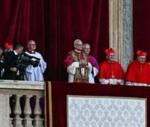You are here
Trump's lessons for defending the rule of law
Jun 30,2022 - Last updated at Jun 30,2022
CAMBRIDGE — A new show currently airing gives fresh meaning to the term reality TV. Call it American Democracy: Clear and Present Danger. It should be required viewing.
Almost 18 months after the January 6, 2021, storming of the US Capitol, a House of Representatives select committee is publicising the findings of its detailed investigation into the event. The committee has interviewed over 1,000 witnesses and examined 125,000 documents. It has held six hearings so far in June, with a view to trying to bring former President Donald Trump to justice.
Vice Chair Liz Cheney, the committee’s senior Republican (and one of only two GOP representatives willing to serve on it), summed up the panel’s conclusion: “President Trump summoned the mob, assembled the mob, and lit the flame of this attack.” Showcasing evidence implicating the former president more directly in the insurrection than was previously known, the committee has documented his failure to call in national guard units or additional police officers to help at the Capitol, and that he ignored his advisers’ pleas to ask his supporters to stand down. Trump appeared to be directly encouraging violence. The picture the committee paints is one of a premeditated attack on democracy, rather than a spontaneous crowd combustion.
Former New York City mayor Rudy Giuliani and John Eastman, a conservative lawyer and academic, appear to have been the “brains” behind the attempted coup (cooking up a plot that Trump knew to be illegal), while the far-right Proud Boys and Oath Keepers provided much of the brawn. The focus of their efforts was to pressure then-vice president Mike Pence to refuse to certify the 2020 presidential election, which Trump lost to Joe Biden. There is also evidence of ongoing attempts to coerce officials in some states to reverse the result. A shocking revelation from the hearings this week indicates that Trump, himself, sought to join the mob.
Several former Trump loyalists have testified against him. Former attorney general Bill Barr dismissed Trump’s election lies as “bullshit”. Trump’s daughter, Ivanka, and his son-in-law, Jared Kushner, effectively stated that they accepted the result (prompting a vitriolic rant from Trump). Capitol police officer Caroline Edwards’ description of “carnage” and “slipping in people’s blood” was a chilling reminder that five people died and 140 law-enforcement officers were injured in the attack.
The conservative federal judge Michael Luttig warned that Trump is “a clear and present danger” to American democracy, a plea addressed to the Republican Party, which continues to close ranks around the former president. House Minority Leader Kevin McCarthy is boycotting the hearings; most Republicans are ignoring them and stonewalling. Trump remains the GOP’s central figure, retains the support of a majority of the party’s base, and may well run for the presidency again in 2024.
Trump’s political modus operandi contains a lesson about the power of emotional engagement. Back in 2016, many pundits were skeptical about Trump’s electoral prospects, given his lack of a strategy that they could recognise. They searched in vain for logic and facts in his incoherent speeches, but missed the emotional thread in his messages that bound voters to him.
The psychologist Paul Ekman identifies six basic emotions: Fear, anger, sadness, joy, disgust, and surprise. Trump is to one of those, anger, what Mozart was to G Minor. And he seems to have an innate capacity to transmit his anger to his supporters. That was Trump’s masterstroke in 2016: Substituting feelings for facts.
The debate about the primacy of “feeling” versus “thinking”, including a heated and high-profile exchange between the social psychologist Robert Zajonc and the psychologist Richard Lazarus, was central to psychology in the 1980s. Zajonc made a compelling case for “affective primacy”, establishing that, in many cases, including in decision-making, affect (roughly speaking, emotion) appears to precede cognition, with justifications often being produced ex post.
More recently, the psychologist Jonathan Haidt of New York University has argued that “moral action covaries with moral emotion more than with moral reasoning”, or, as he famously put it, the emotional dog wags its rational tail. For many Americans, Trump has all but put this dog on a leash. By contrast, and despite growing evidence, most American liberals remain determined to bury emotion and focus on the rational. That’s like bringing a knife to a gunfight.
Emotional responses are, by design, quick, automatic, and pervasive, and tend to overpower conflicting judgments. In his seminal 1872 work, The Expression of the Emotions in Man and Animals, Charles Darwin argued that our affective responses are on a continuum from non-human animals and derive from split-second reactions that emerged as existential requirements of survival (for example, to escape a predator). As psychologists currently understand it, “organisms had reflex-like responses that allowed them to respond to environmental threats… and emotional expressions were residues of these responses.” It is this survival instinct to which Trump appeals.
But our non-human ancestral inheritance does not condemn us to be ruled by our baser instincts. The philosopher David Hume argued that moral sentiment was a better guide than reason alone. We may know that a particular action might harm many people, but unless we care about those people or about human well-being, that awareness does not guide our action.
With both interest in the Capitol riot and perceptions of Trump’s culpability declining, the January 6 Committee faces an uphill task. But by taking a leaf out of Trump’s book and courting public opinion, the panel has got its priorities right. The production value of the hearings has been excellent, and instead of relying solely on logical arguments, the committee is creating a compelling narrative in a multipart docudrama that is more likely to elicit moral engagement.
About 20 million Americans tuned in for the first hearing, similar to the number that watch the Macy’s Thanksgiving Day Parade on TV and well above the 4.6 million to 7.6 million who saw the season finale of Trump’s The Apprentice. At the moment, the score looks like Trump: 0, Rule of Law: 1. But the key to this all-important drama’s success will be keeping viewers hooked.
Antara Haldar is associate professor of Empirical Legal Studies at the University of Cambridge. Copyright: Project Syndicate, 2022.













